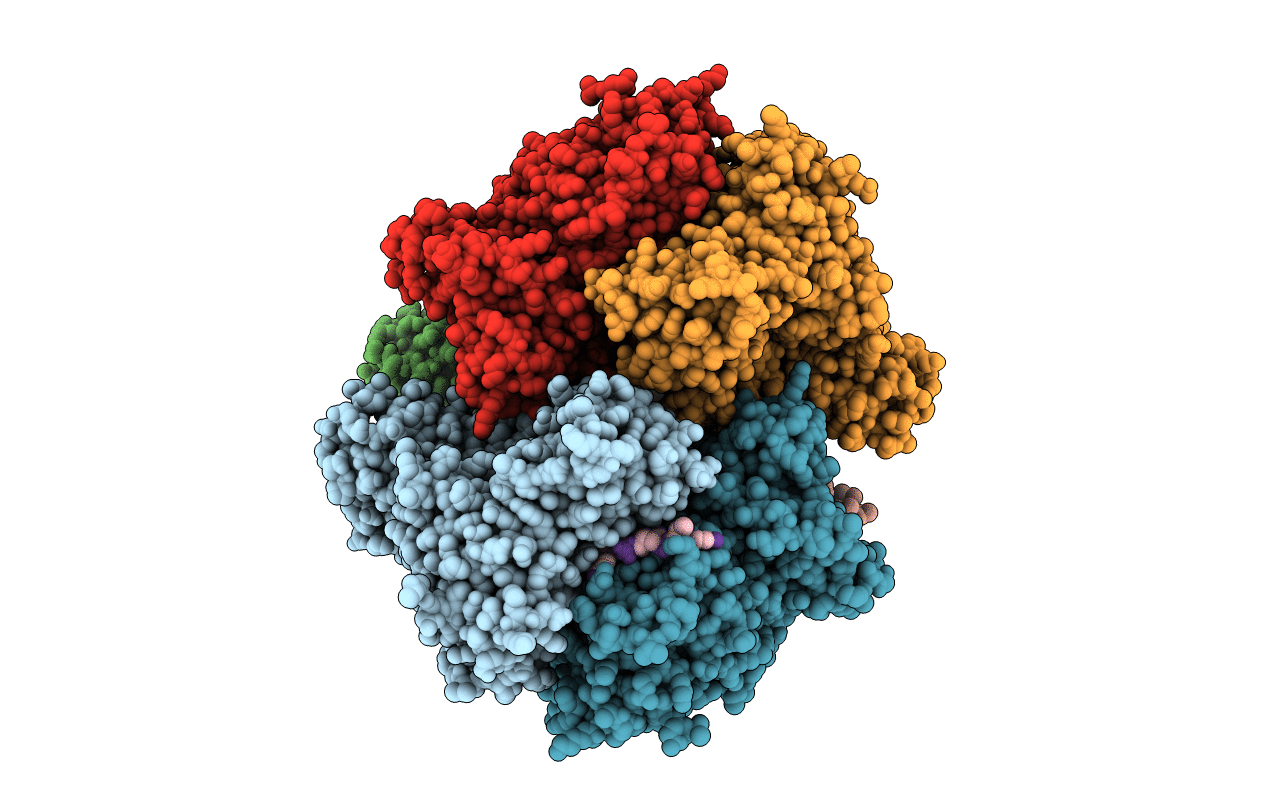
Deposition Date
2014-12-11
Release Date
2015-02-25
Last Version Date
2024-02-28
Entry Detail
PDB ID:
4X9E
Keywords:
Title:
DEOXYGUANOSINETRIPHOSPHATE TRIPHOSPHOHYDROLASE from Escherichia coli with two DNA effector molecules
Biological Source:
Source Organism:
Escherichia coli (Taxon ID: 83333)
Escherichia coli (Taxon ID: 562)
Escherichia coli (Taxon ID: 562)
Host Organism:
Method Details:
Experimental Method:
Resolution:
3.10 Å
R-Value Free:
0.22
R-Value Work:
0.16
R-Value Observed:
0.16
Space Group:
P 21 21 21


